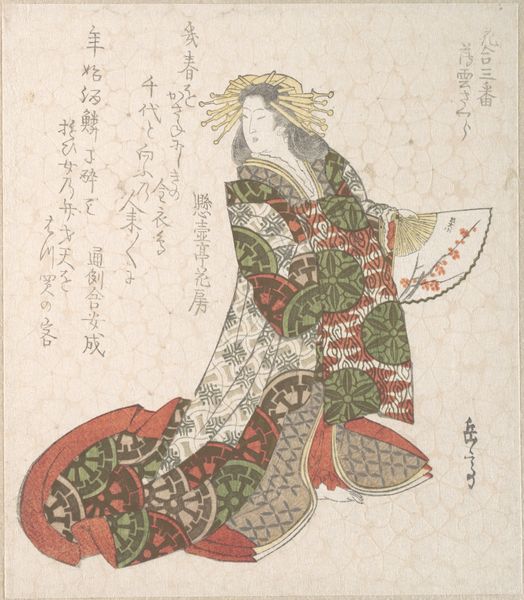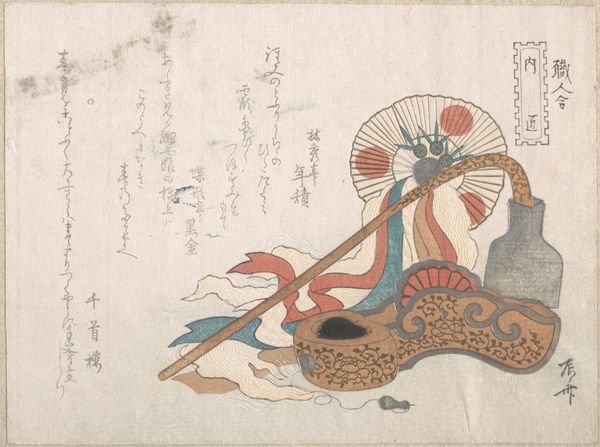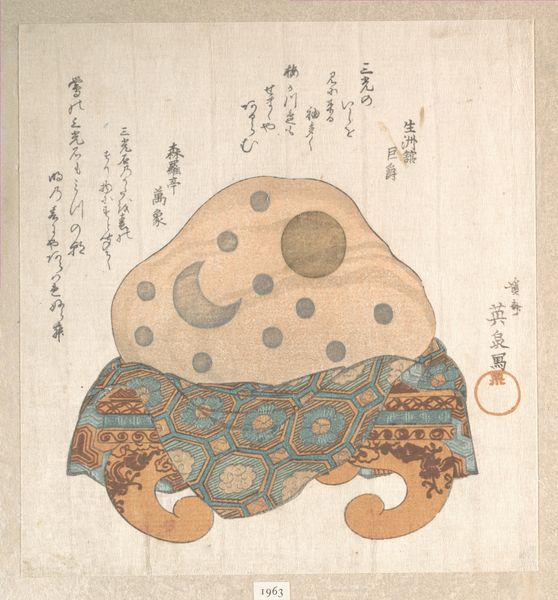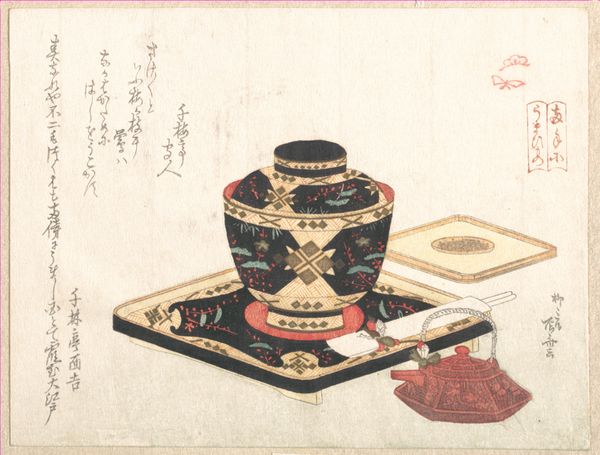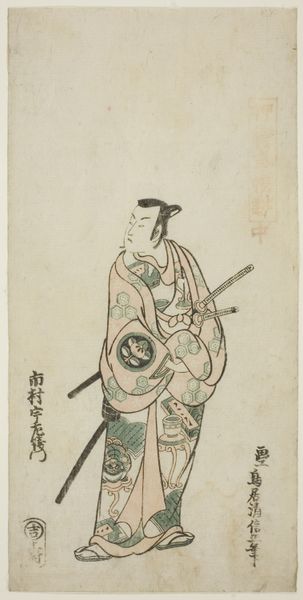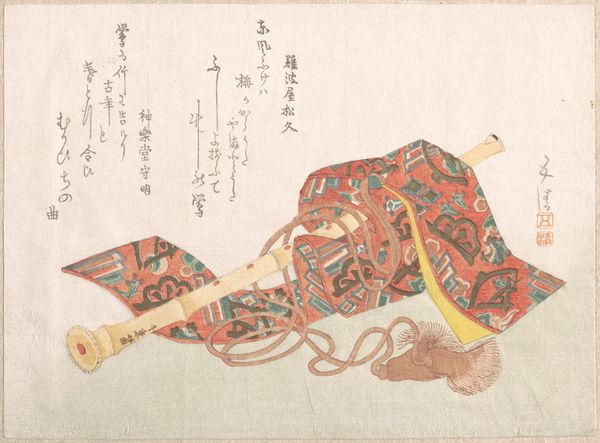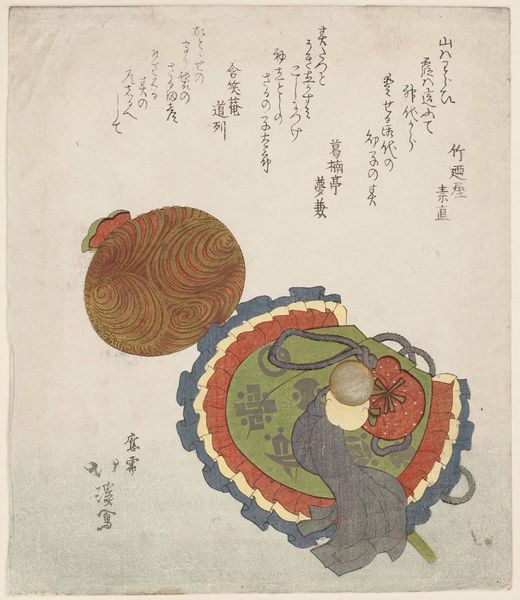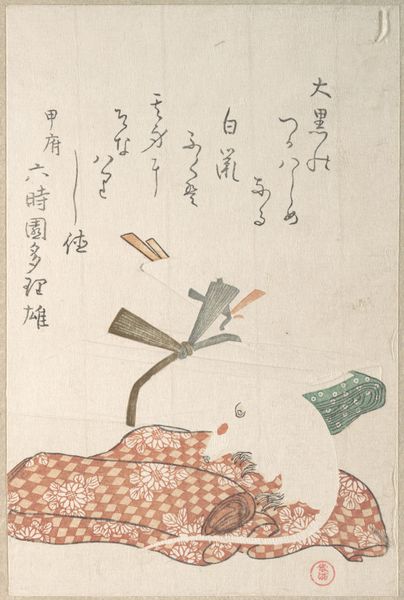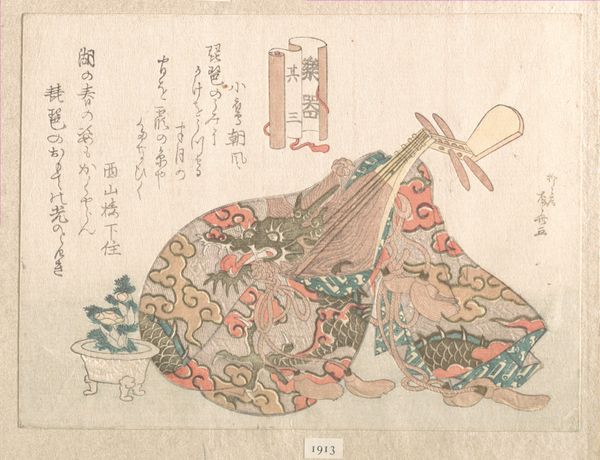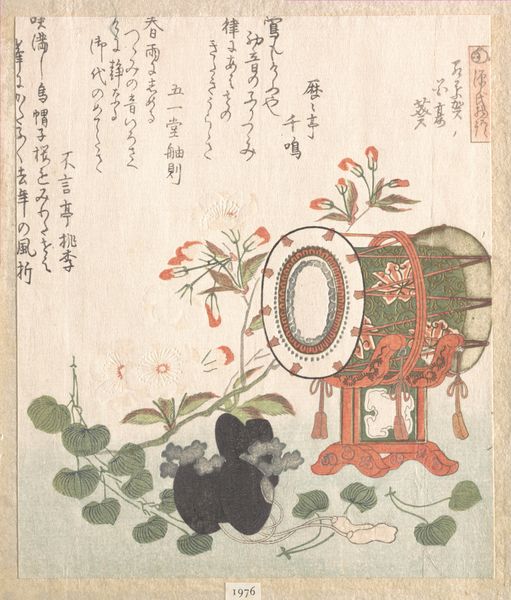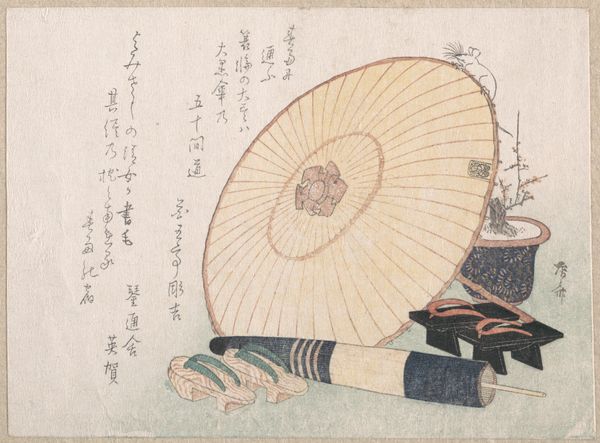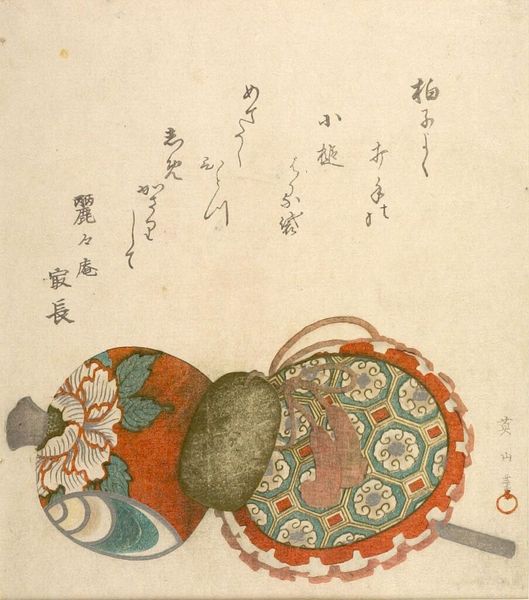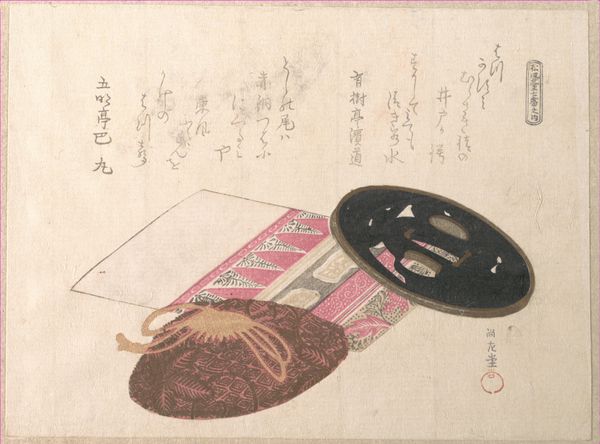
Drum and Keiro, A Kind of Musical Instrument Used for the Bugaku Dance 19th century
0:00
0:00
# print
#
asian-art
#
ukiyo-e
#
calligraphy
Dimensions: 8 13/16 x 3 15/16 in. (22.4 x 10 cm)
Copyright: Public Domain
Curator: Here we have a 19th-century print by Takashima Chiharu, currently residing at the Metropolitan Museum of Art, which depicts “Drum and Keiro, A Kind of Musical Instrument Used for the Bugaku Dance." It’s an intriguing image of an instrument. Editor: My first thought is that there’s a strange tranquility about this piece, even though it’s about a musical instrument designed to be struck. The muted color palette gives a sense of quiet contemplation, doesn't it? Curator: Absolutely. Looking closely, the craft is exceptional; the print medium has allowed for intricate detailing. Notice the texture achieved through the layering of ink—see how that affects the surface? It really does encourage a kind of sensory assessment, doesn’t it? One thinks about the sound produced but also its texture. Editor: It does, and those decorative tassels, hanging so still, remind me of Shinto purification rituals – cleansing the space through sound and gesture. Bugaku, being a dance traditionally performed for the imperial court, was steeped in layers of symbolism wasn't it? Even that mallet feels ritualistic in its placement. Curator: Exactly, each aspect reflects courtly ritual. The drums used were far more than simple objects. It suggests a network of production where skill and the supply of materials dictated the nature of artistic practice. Also, Ukiyo-e prints like these circulated among a broader urban audience, enabling engagement with courtly culture on different terms, as cultural product. Editor: And through the lens of cultural memory, instruments are more than objects – they're conduits to the past. The drum carries the rhythm of tradition. In considering labor, maybe here also the art evokes the training involved in crafting, decorating and the dedication and practice needed to even use these objects? Curator: I’d agree. The circulation of these prints provides evidence that even the upper-class arts like musical performance becomes subject to different production paradigms as the instruments and traditions of courtly settings transition into broader culture. Editor: This little print, so deceptively simple, holds an incredible weight of cultural memory, musical traditions, and craftsmanship. It’s amazing what we can unpack through such a small window into the past. Curator: Precisely. Thank you for that additional insight; I am not sure I could have gotten there alone. Hopefully, this little print sparks further curiosity for our listeners.
Comments
No comments
Be the first to comment and join the conversation on the ultimate creative platform.
